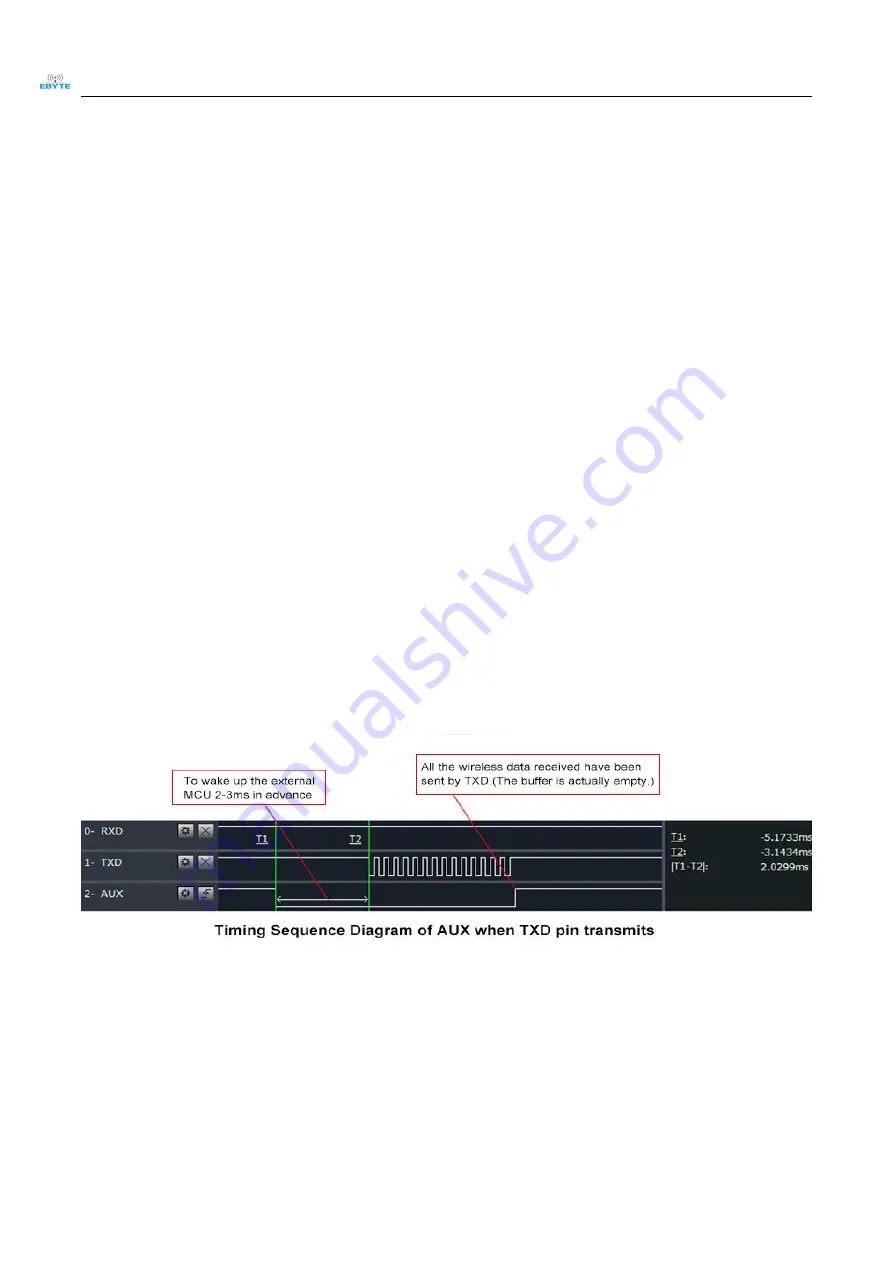
Chengdu Ebyte Electronic Technology Co., Ltd
E32-433T30D User Manual
Copyright ©2012–2019
,
Chengdu Ebyte Electronic Technology Co.,Ltd.
8
For example: Set the address of module A as 0xFFFF or 0x0000, and the channel as 0x04;
When module A is the transmitter (transparent transmission), all modules under channel 0x04 will receive the data,
so A can broadcast.
5.4 Monitor address
For example: Set the address of module A as 0xFFFF or 0x0000, and the channel as 0x04;
When module A is the receiver, it can receive the data sent from all modules under channel 0x04, the purpose of
monitor is realized.
5.5 Reset
When the module is powered, AUX outputs low level immediately, conducts hardware self-check and sets the
operating mode based on user’s parameters. During the process, the AUX remains low level. After the process
completed, the AUX outputs high level and starts to work as per the operating mode combined by M1 and M0.
Therefore, users need to wait the AUX rising edge as the start of module’s normal work.
5.6 AUX description
AUX Pin can be used as indication for wireless send & receive buffer and self-check.
It can indicate whether there are data that are not sent yet via wireless way, or whether all wireless data has been
sent through UART, or whether the module is still in the process of self-check initialization.
5.6.1 Indication of UART output
To wake up external MCU
5.6.2 Indication of wireless transmitting
Buffer (empty): the internal 512 bytes data in the buffer are written to the RFIC (Auto sub-packaging).
When AUX=1, the user can input data less than 512 bytes continuously without overflow. Buffer (not empty): when AUX=0, the
internal 512 bytes data in the buffer have not been written to the RFIC completely. If the user starts to transmit data at this
circumstance, it may cause overtime when the module is waiting for the user data, or transmitting wireless sub package.
When AUX = 1, it does not mean that all the UART data of the module have been transmitted already, perhaps the last packet of







































